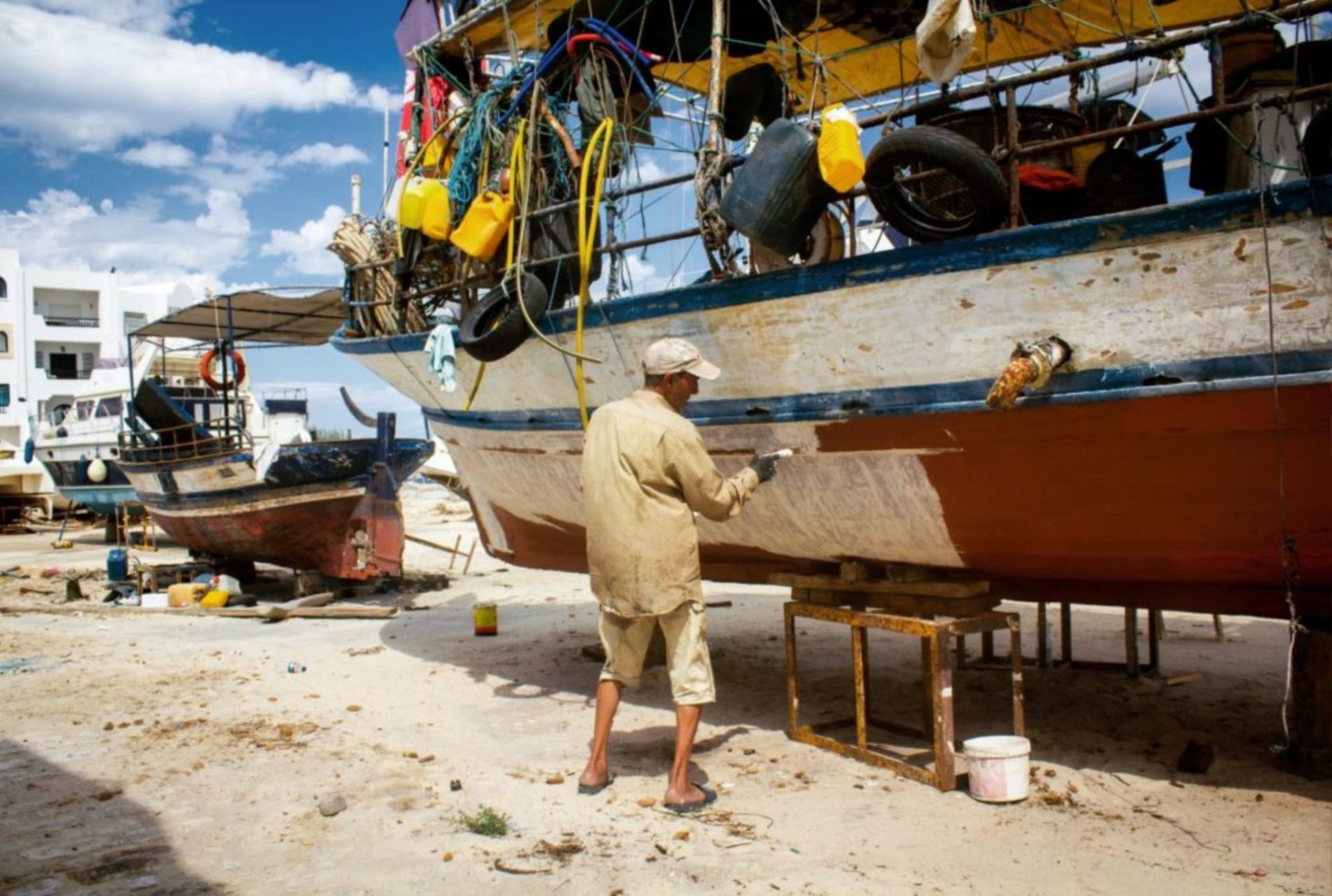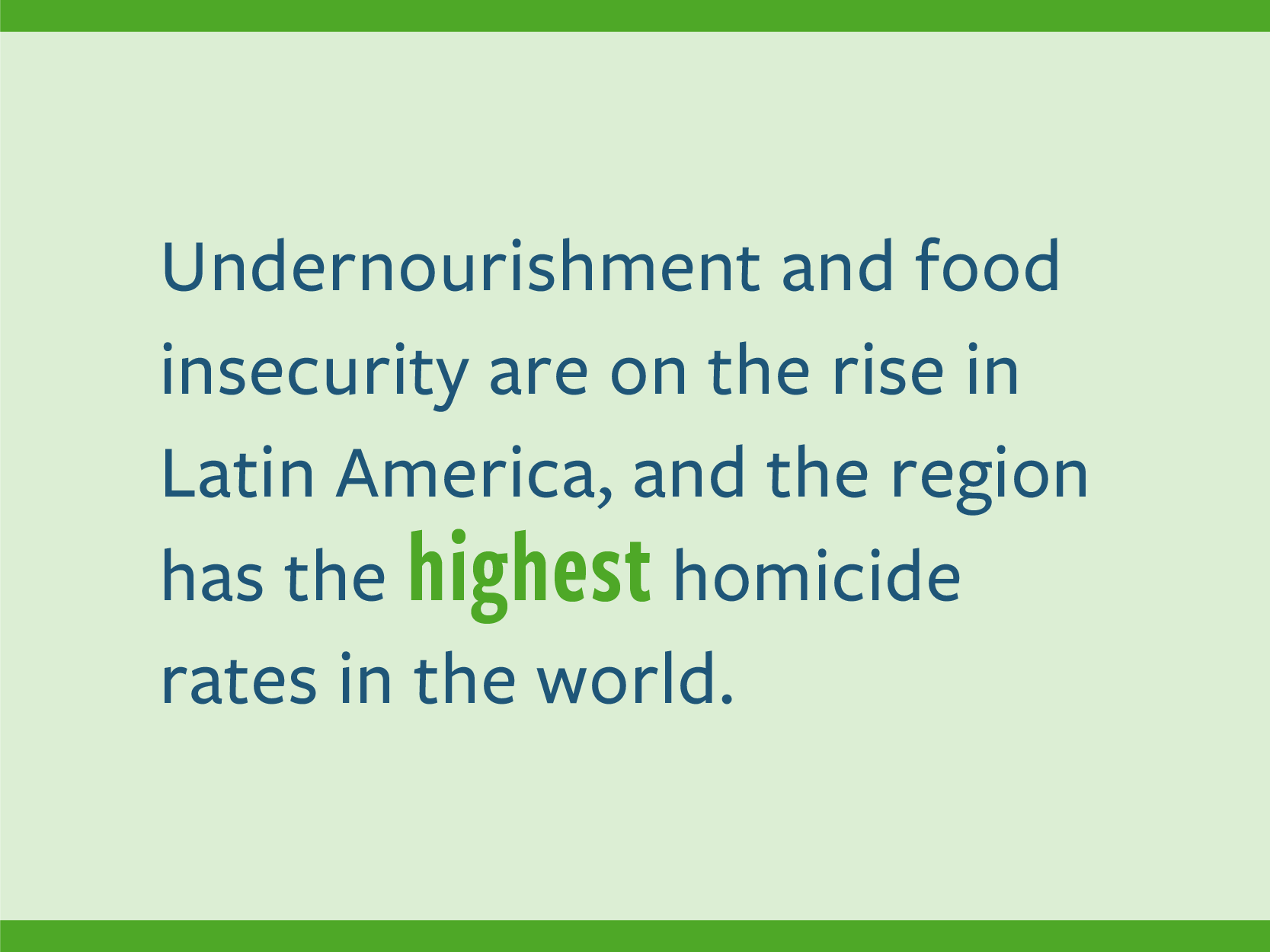
Regional Trends
Latin America and the Caribbean
High levels of population displacement, political and economic turmoil, and natural disasters increase insecurity and poverty levels in countries and communities across Latin America and the Caribbean.
While the region has experienced notable economic growth over the last several decades, political instability and environmental shocks related to climate change have transcended sovereign borders, jeopardized developmental goals, and resulted in new and emerging humanitarian crises.
Challenges of climate and conflict transcend borders.
Unprecedented levels of displacement and migration across the hemisphere require increased development support for refugee- and migrant-hosting countries, coordinated local, regional, and international responses, and innovative solutions that not only meet the basic needs of displaced persons and host communities alike but also address the underlying causes of displacement. Venezuela is the source of one of the world’s most significant displacement crises. The U.N. estimates that by December 2019, over 5 million Venezuelan refugees and migrants will have fled into neighboring countries due to deteriorating human rights conditions resulting from economic instability, food insecurity, health system collapse, and political violence.
Hosting countries such as Colombia, Ecuador, Peru, Chile, and others have graciously welcomed refugees and migrants but are struggling to offer services and protection to those in need considering the dramatic influx of people overwhelming state-facilitated services. In Central America’s Northern Triangle, migrants and refugees are fleeing violence, consecutive years of drought, and lack of employment and are seeking refuge and opportunity in the United States. U.S. policy decisions to restrict humanitarian and development assistance to Central America—as well as restrictions on asylum—further complicate the situation.
Growth and progress are unequal.
Overall, living conditions and economic outlooks for people living in Latin America and the Caribbean have improved in recent decades. The percentage of people living in poverty in Latin America fell from 45% in 2002 to 30% in 2017. Nevertheless, Latin America and the Caribbean’s per capita GDP of $12,000 still lags far behind developed economies’ per capita GDP of $46,600. Experts anticipate 2019 GDP growth in Latin America to be the worst in the world, at only 0.2%. Additionally, looming humanitarian and development challenges threaten progress in Latin America and the Caribbean, even in the most stable countries in the region.
In countries such as Haiti, weak governance, violence—including gender-based violence—and lack of economic opportunity continue to perpetuate cycles of poverty and instability. Populations in Chile and Ecuador have grown frustrated and disillusioned by alleged corruption and inequality. Moreover, undernourishment and moderate and severe food insecurity have been on the rise in the last several years in Latin America, and the region has the highest homicide rates in the world. Such challenges are magnified by environmental shocks that hinder resilience, including natural disasters like Hurricane Dorian in the Bahamas and ecological destruction in Brazil.

The international order is shifting.
Just a couple of decades ago, Venezuela was a relatively stable democracy with one of the region’s wealthiest economies. However, in 2014, the country’s economy and the political system started to collapse resulting in a crisis that has reverberated across South America and into the Caribbean. At the time of writing, governance crises are arising elsewhere in the region with mass-scale protests rapidly developing in Chile, Bolivia, and Colombia, challenging long-entrenched leaders and economic elites.